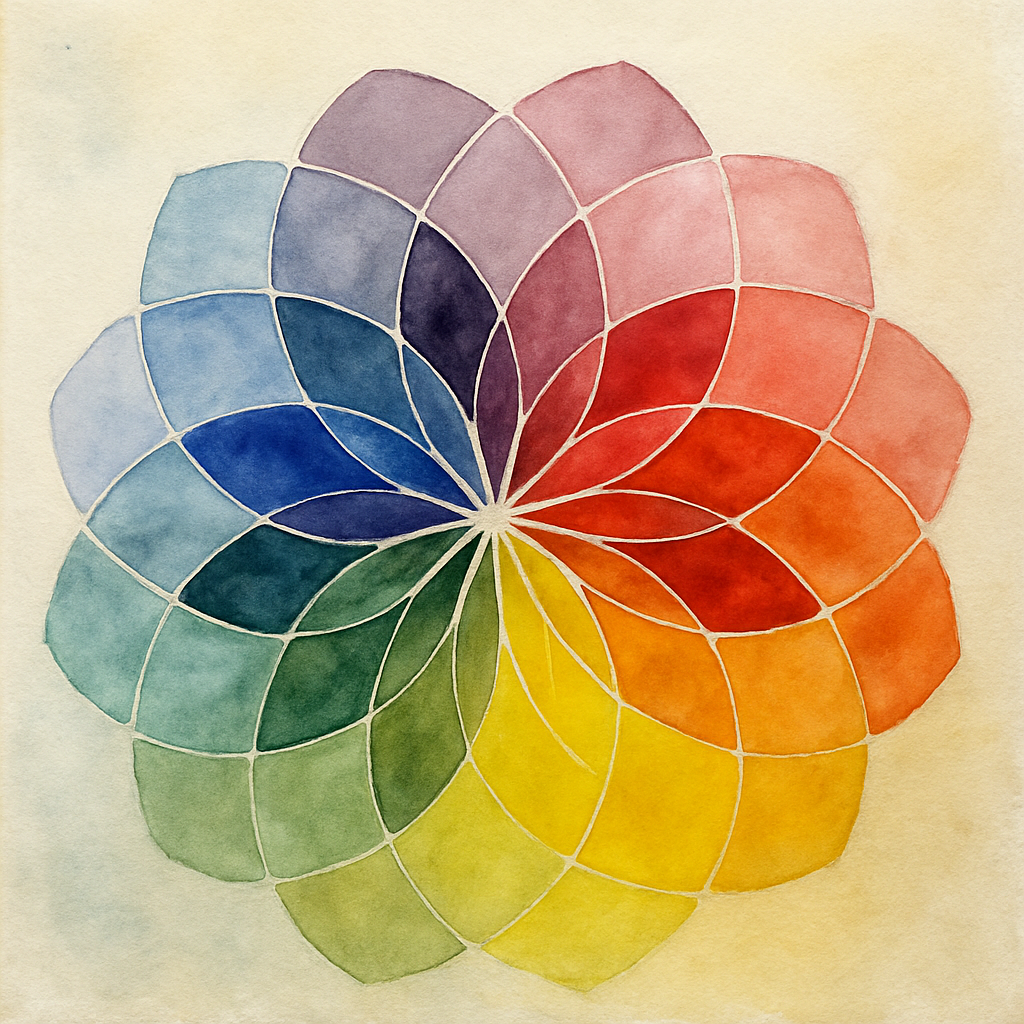
Math: Arithmetic, Geometry & Algebra
Waldorf Math
The Waldorf approach to mathematics is rooted in rhythm, story, and imagination, bringing numbers to life in ways that mirror a child’s development. Math is not taught as an abstract subject but rather as a living expression of the natural world. The Qualities of Numbers is taught before the Quantities of Numbers setting the stage for a deeper understanding and appreciation of the world of mathematics. The curriculum gradually unfolds from concrete experiences and imaginative stories in the early grades to logical reasoning, proof, and abstract concepts by the upper grades. Each stage of childhood development is met with a corresponding stage in mathematical thinking.
In Grade 1, math is introduced through stories, movement, and imagination. The four mathematical processes, addition, subtraction, multiplication, and division, are taught all at once through living stories of kings and knights and imaginative stories that bring the quality of these mathematical operations to the forefront of the lessons. Rhythm is used heavily in the early years all the way through the mastery of the multiplication table.
Grade 2 deepens the connection to numbers through fables and saintly stories that balance opposites, just as addition and subtraction or multiplication and division are seen as polarities. Practice comes through rhythmic clapping, skipping, and recitation of times tables. Now that the basics have been learned in Grade 1, students have an opportunity to practice and become proficient. Much of the mathematical foundations were laid down in Grade 1, but it will takes years to master whole number operations before diving into fractions.
In Grade 3, children are going through the monumental nine-year-change. During this chaotic transition from the imaginative infancy of their childhood to the grounded in reality of their childhood, math becomes grounded and practical. Measurement, time, money, and weight enter the curriculum, all linked to farming, building, and housework activities. These activities are practical and necessary for this developmental stage and the math lesson reflect the new needs of the child.
In Grade 4 fractions are introduced. Fractions are brought in a practical way with land division and inheritance. The long road to fraction mastery begins with real life examples that are still story driven. Patterns and symmetry are explored artistically, and long multiplication and division are also practiced extensively.
In Grade 5, we enter the Golden Age of Childhood. A time when children are in harmony and balance before the tumultuous challenges of puberty. Students of 11 years of age are seeking beauty and perfection. Geometry epitomizes those qualities as does Greek and Roman architecture, art, poetry and botany. Decimals are introduced, and fractions continue, now with greater precision. Students discover the origins of the geometric forms through compass and straightedge work, revealing the harmony of circles, triangles, and polygons.
The Grade 6 student continues the study of Geometry with a discovery of the solid platonic solids, moving from the two dimensional of Grade 5 to the three dimensional of Grade 6. Geometry continues with the study of angles, area, and the relationships of geometric forms. Math meets the 12 year old adolescent’s awakening to cause and effect with the introduction of business math, percentages, ratios, and interest. With the study of Rome, the western origins of law, order, justice and structure, students engage in the practical applications of math with calculating discounts, prices of bulk orders, taxes and budgeting through trade and commerce. In designing floor plans, calculating fencing and flooring, math solidifies its real-world relevance
The Grade 7 may be ready for Algebra or pre-algebra if the student has gone through puberty. As algebra is an abstract math at its core with ‘X’ representing the unknown, it’s best that students have had the brain development necessary to take on the challenges of Algebra. In our homeschool, I reserve the rigor of Algebra for Grade 9 ensuring my students have gone through puberty and are ready for the abstract and critical thinking skills necessary to be successful in Algebra. Instead, I continue with Geometry and pre- Algebra in Grade 7 and 8. However, to bring harmony and balance to the year, perspective drawing which is introduced in Grade 7 may be explored in Geometry. Perspective drawing mirrors the new development the Grade 7 student is experiencing as the draw closer to puberty.
Many Grade 8 students are ready for Algebra. If a slow introduction was achieved in the previous year, now Algebra deepens, and students take on linear equations, factoring, and graphing. If the Platonics had not been explored in Grade 6 or 7, now Geometry extends into three-dimensional forms and the study of platonic solids. Geometry is a beautiful expression of natural world and lends itself well to hands-on activities like constructing the Platonic solids with paper. Practical arithmetic continues with compound interest, power, and roots, ensuring that the adolescent meets the world with confidence in both abstract and practical realms. If the student is at all struggling with the foundations of arithmetic, I suggest the Grade 8 year be used for mastery in pre-Algebra which includes a solid understanding of the four mathematical operations with whole numbers (integers), fractions, percents and decimals, with an understanding of integers, irrational numbers, powers and roots and a mastery of the times table and mental math
Arithmetic, Geometry & Algebra
-

Arithmetic
Math can be a daunting subject area to tackle. We may have experienced our own math trauma in school which led up to grow up believing we weren't good at math resulting in a fear or dislike of the subject. Some of us did well in math. We learned the exactness of math and the clear answers it expects and rested in the solid belief that there is an answer in math and we will persevere to find it.
-
Mental Math
Mental Math are math questions that can be worked out in one's head. Often, they are two part questions which involve a multiplication or division question first, followed by an addition or subtraction question next. When you add in fractions, decimals and percents, you can easily see how complex the questions can become. One thing about math is that it is exact. 12 x 4 = 48. Always. It isn't maybe 47 or sometimes 49, it's simply 48.
-
Geometry
Geometry is one of the most fascinating fields of math a student will encounter, in my opinion. There's so much you can do when children are young with simple math centered on identification of shapes and solids. While introducing geometry this way and with picture books may not reflect the Waldorf approach authentically, it has been our approach in our homeschool for years. I love adding living books into our lessons because I'm often at a loss for stories of my own. Plus, I am not a teacher by profession and rarely solely rely on a curriculum, so I appreciate the breadth and depth of the books and resources available.
-

Algebra
When it comes to teaching Algebra the Waldorf way, I admit, I haven't stayed true the teaching method. Instead, I've relied on the Key to Algebra as a teaching tool to introduce and teach algebra in a slow and gentle way. While we do have the Live Education Waldorf curriculum for middle school which includes the Algebra main lesson book and Teaching Mathematics in Rudolf Steiner Schools, I didn't use them as much as I would have liked. In part because the imaginative and real life approach to algebra was such a departure from the way I learned and understood math, I had a hard time getting my mind reoriented so that I could teach it that way.
-
Math in the Garden
When it comes to math, there’s practical everyday math, then there’s everything you learn in school in your math class. While there is overlap, it’s sometimes hard to make the leap from a math worksheet on fractions to baking a batch of cookie and choosing to cut the recipe in half or double it. Equally it’s hard to make the leap from your percents worksheets, to calculating your final cost (plus tax) of a T-Shirt marked $14.99 with 40% and 8% sales tax.
-
Quality of Numbers 1-12
In a Waldorf setting, the numbers 1-12 are explored through daily stories which explore the quality of each. Let’s explore the numbers together. Each number has a video in which I share the resources I’m using to explore that number as well as a chalk drawing tutorial. I use a number of resources and for the bulk of the numbers the resources are the same, but there are specific math picture books that I’ve chosen for each number. I dipped into my own library to source these books as we’ve accumulated a number of math resources over the years. If you have just the right book for any of the numbers 1-12 (or beyond) please share your resource in the comment section.




